THE CHANGES AT OLYMPIC LAKE’S 8th HOLE:
PROGRESS OR VANDALISM?
The Olympic Club is Americas oldest athletic club formed in 1860. From Payne Stewart’s never-ending putt on 18 in 1998, to Ben Hogan’s and Arnold Palmers slip, it has been the scene of history and controversy.
Now, the famed club faces controversy, again, with the redesign of its 7th and 8th holes.
The famed course has lost some of its persona. Its standing with all three major magazines has fallen. It once ranked 10th best course in America with Golf Digest, now it ranks 26th. Golf Magazine once placed it 23rd best in the world, now it ranks 45th.
The course has undergone multiple changes since it merged with Lakeside Country Club in 1922, including a major remodel by architect Sam Whiting in 1927. Numerous tweaks, namely changes by Robert Trent Jones prior to the 1955 US Open and again with Jones prior to the 1966 Open began a trend at Olympic Club of modernization which the club sadly can not bring to an end.
The work is particularly inexplicable considering the excellent restoration work performed at nearby clubs such as San Francisco Golf Club, California Golf Club and the Meadow Club
In the minds of some golf critics, the steep, uphill and blind par-3, 8th, never deserved much of a reputation. These critics may have been the ones who spent more time looking at it from the clubhouse, than playing it. Golfers found this short, deceptive hole to be eminently demanding. Miss-hits often caught tree limbs, or fell short into the deep and difficult front bunker. Even after good shots, players walked to the green with measures of uncertainty. Now the hole is gone, bulldozed by a superintendent and his personal friend, a golf architect, seeking more length for one week in June 2012 when the club hosts its 5th U.S. Open.
Here is an evolution of the hole and its sad demise as seen through historic photos.Historians believe this to be one of the earliest pictures of the Lakeside CC course, from about 1920. It shows the tee shot to a fortress green. Walkways line the green on the left and right side of the flat bottom bunker.
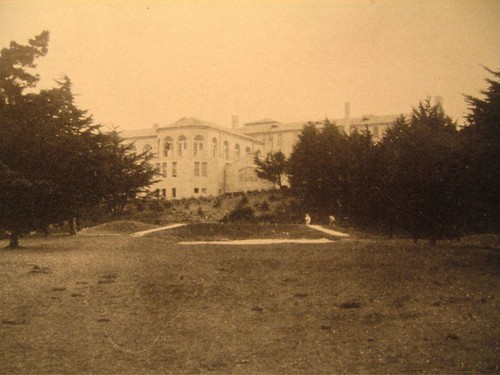
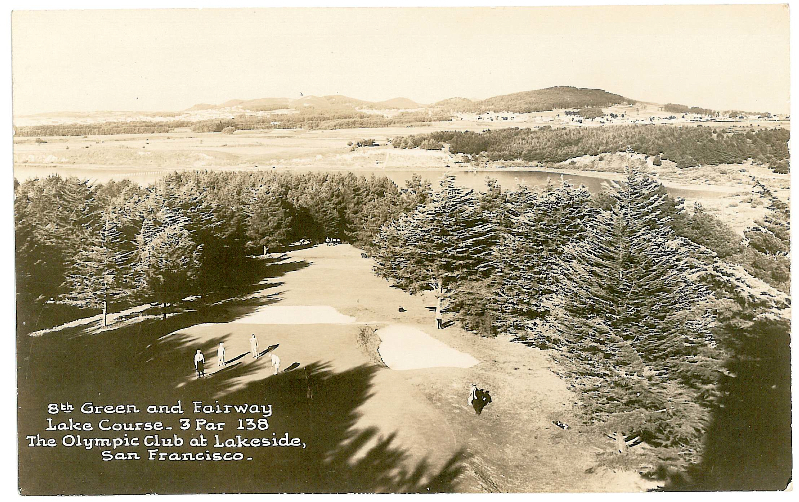
Another shot from the 1920's, showing the view from the clubhouse. The green has slightly square corners in a Biarritz style, although some historians argue that it has a swale in the middle. Either way, this version of the 8th provided a demanding tee shot to any level. In the 1930’s, the club split the bunker to make a walking path to the 9th tee.

The 8th green during the 1955 US Open playoff between Hogan and Fleck. Observe one of America’s great unique bunkers, the classic finger bunker at the back of the green. Other bunkers had classical shape and natural looking mounding surrounding the bunkers.
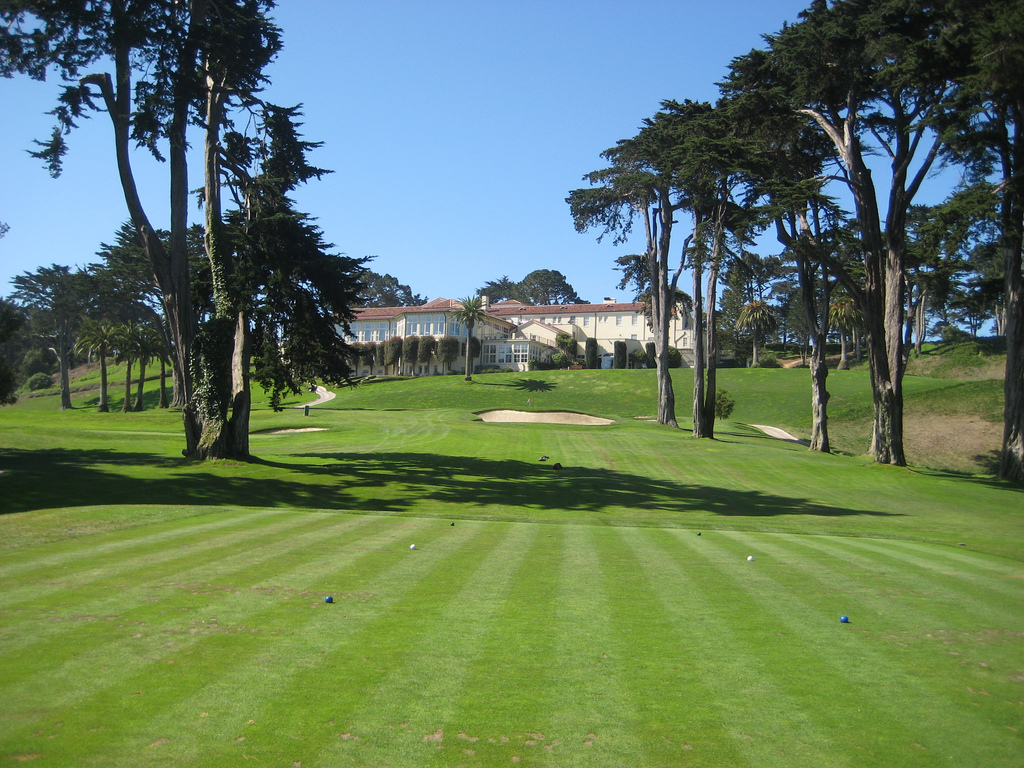
The tee shot on the 8th in about 2005. The course had eliminated trees on the left side just before the 1998 US Open for safety reasons. By this time, the classic style walk off tee had been unnecessarily raised and expanded.
Green around 2005. The green had been "modernized" significantly by Robert Trent Jones Sr. prior to the 1966 US Open. Note how poor mowing patterns had turned the green into a circle and all the bunkers have lost their three dimensional rough edge look. The cart path runs across the middle of the fairway. The single bunker (on right) had been split (again) into two shapeless round pot bunkers.
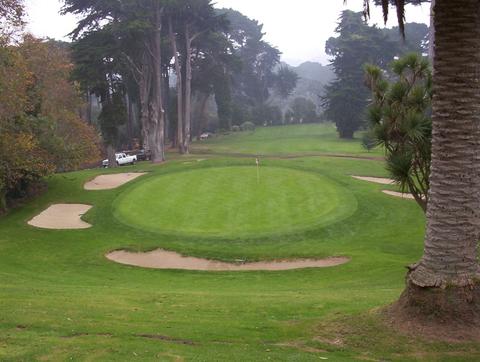
The 2006/2007 version, with work performed in house at a considerable cost. Extensive grading into the hill allowed the cart path to be extended around the green. The right side had been cleared away of brush and trees.
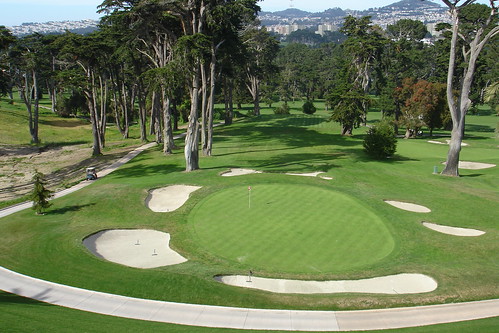
The once great finger bunker had become a small modern strip bunker without classical shape or character.
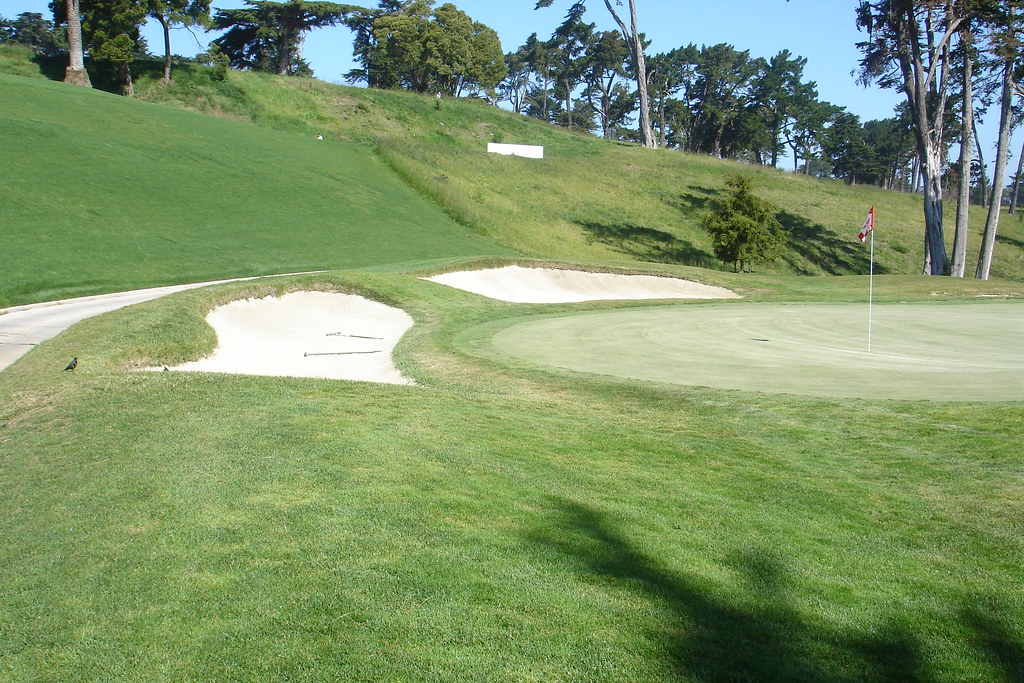
Today’s alteration of the Lake’s 8th really began in 2008, with the 7th green. The course superintendent convinced club officials to extend the 7th and raze the historic three tier green (described as one of the top 500 holes in the world) in preparation for the 2012 US Open. One move begat another, and forced changes to the 8th.
With a budget of over $1 million, work began in late 2008, with William (Bill) Love as the architect. Mr. Love was chosen over more qualified restoration architects due to his long time friendship with the superintendent. Mr. Love recommended his preferred contractor, Frontier Golf Construction as the contractor, again over more qualified restoration shapers and contractors. The superintendent and staff assisted. All 18 greens are converted to USGA specifications yet instead of seeding the greens, rolled in bent grass sod at a considerable additional cost.
The all new hole played from a different angle, June 2009. The green is shaped kidney style.
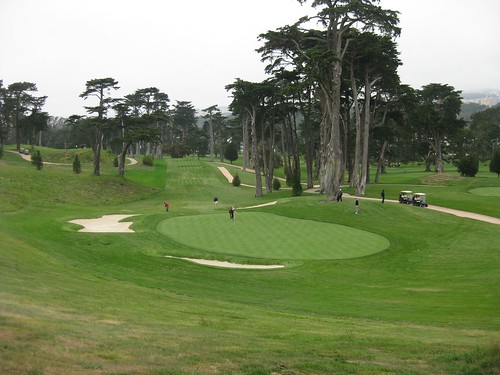
Note: The old 8th tee is visible on the right side of this photo. The new 7th green addition jets out, slightly.
The path from the 7th green to the new 8th tee is now the longest on the course and is aesthetically typical of modernization at the club.
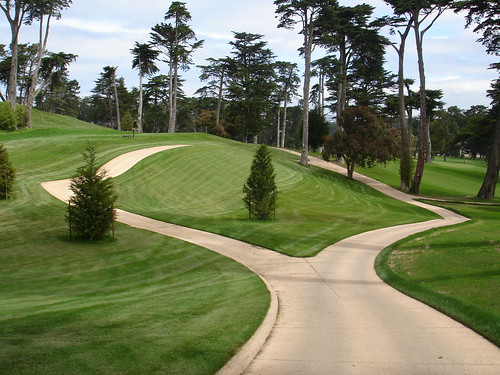
Another two dimensional oval bunker on the back right of the new 8th green. This style is consistent with the other bunkers maintained by the superintendent and built by the architect.
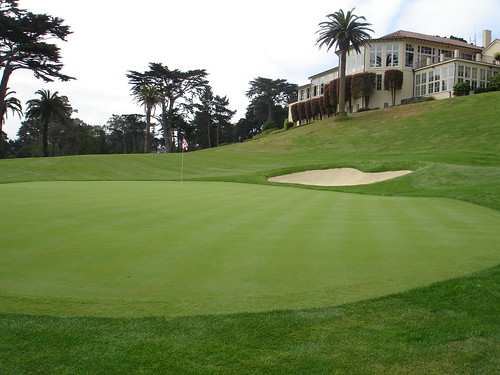

The view from the tee. The large multi tiered tee area is out of context with most of the course except for other multiple tees that Mr. Love and the superintendent have installed over the last few years. The hole now plays 200 yards, up from 137 to 150 on the old 8th hole. All of Olympic Clubs par 3 holes now play middle to long in length. The hole continues to play up hill yet the front of the green is now open as opposed to the old hole which required a force carry over the bunker.